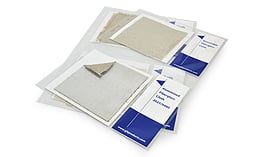Traditional materials of the insulation world, such as fiberglass and polyisocyanurate insulation are being pushed aside as they make way for a more natural and sustainable material, mineral wool.

Mineral wool was first commercially produced in Germany in 1871 and quickly became known for its insulation benefits. It is also known as rock wool, stone fiber, or mineral fiber. As its name suggests, it is a material made from stone fibers. The material is made by spinning or drawing molten stone and slag into a heap of thin pliable fibers. Over the last few decades, it has gained acceptance in the industrial insulation world as an effective insulator.
Advantages of Mineral Wool
Mineral wool is a highly efficient insulator, and because of its many benefits, other synthetic insulation materials just do not compare. The material is highly flame retardant and is used in hot applications up to 1,200°F; and it has lower thermal conductivity than calcium silicate and perlite.
It is not just heat and fire that find it tough to get through this material, but also sound. This product is an excellent acoustic insulation solution.
In addition to that, mineral wool is easy to install. The material is firm and holds its shape, unlike fiberglass (click here for a comparison of mineral wool and fiberglass). Additionally, it dries quickly and effectively, making it less prone to mold growth.
When it comes to sustainability, mineral wool scores an A+ because it generates very little waste when being made. It can also be recycled and fed straight back into the manufacturing process.
As you now know mineral wool is a highly versatile product. Its exceptional properties make it one of the best products for any industrial insulation project. Mineral wool can be used for mechanical piping, boilers, vessels, and tank heads just to name a few.
To learn about the mineral wool products GLT Products offers, click here.


